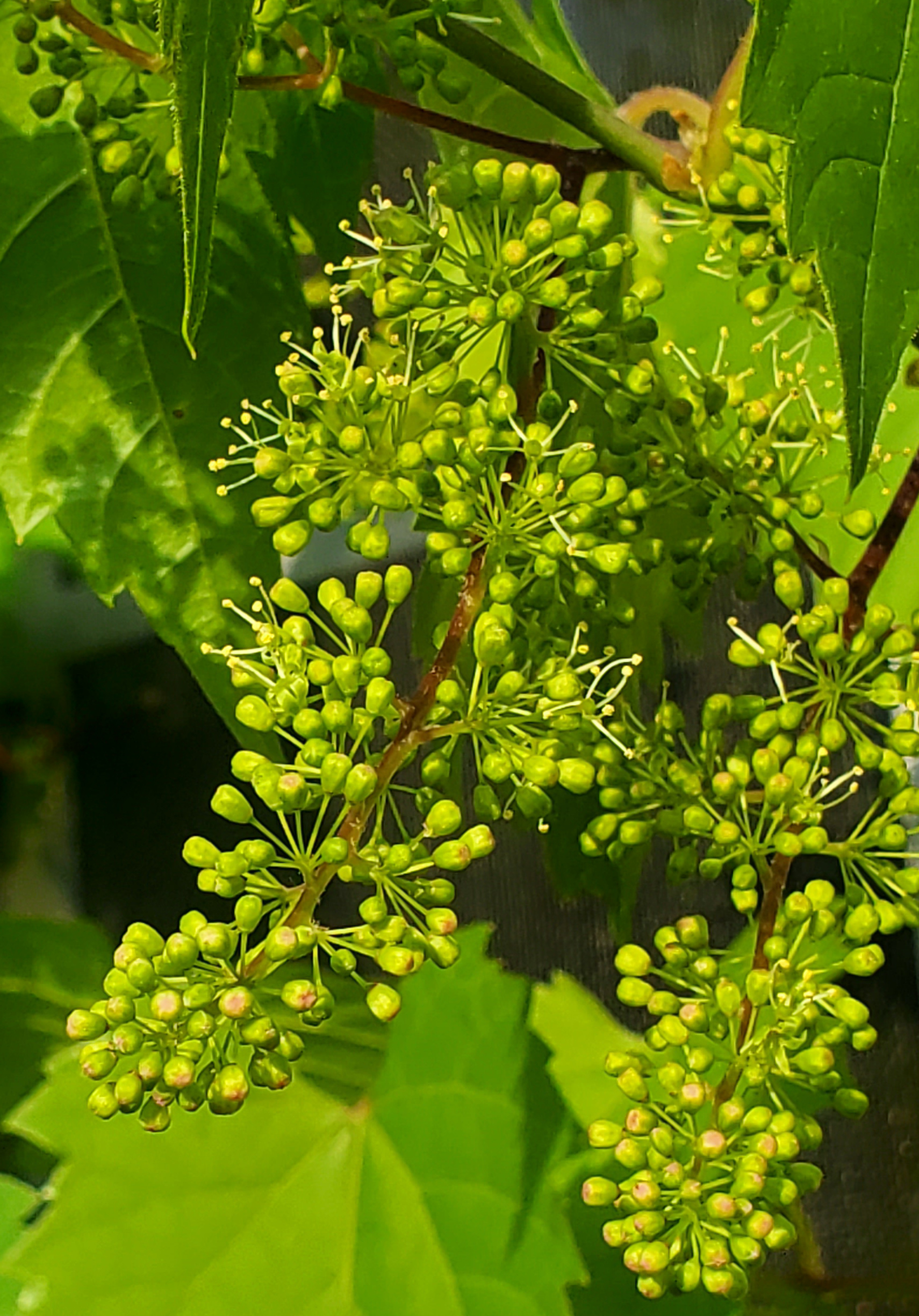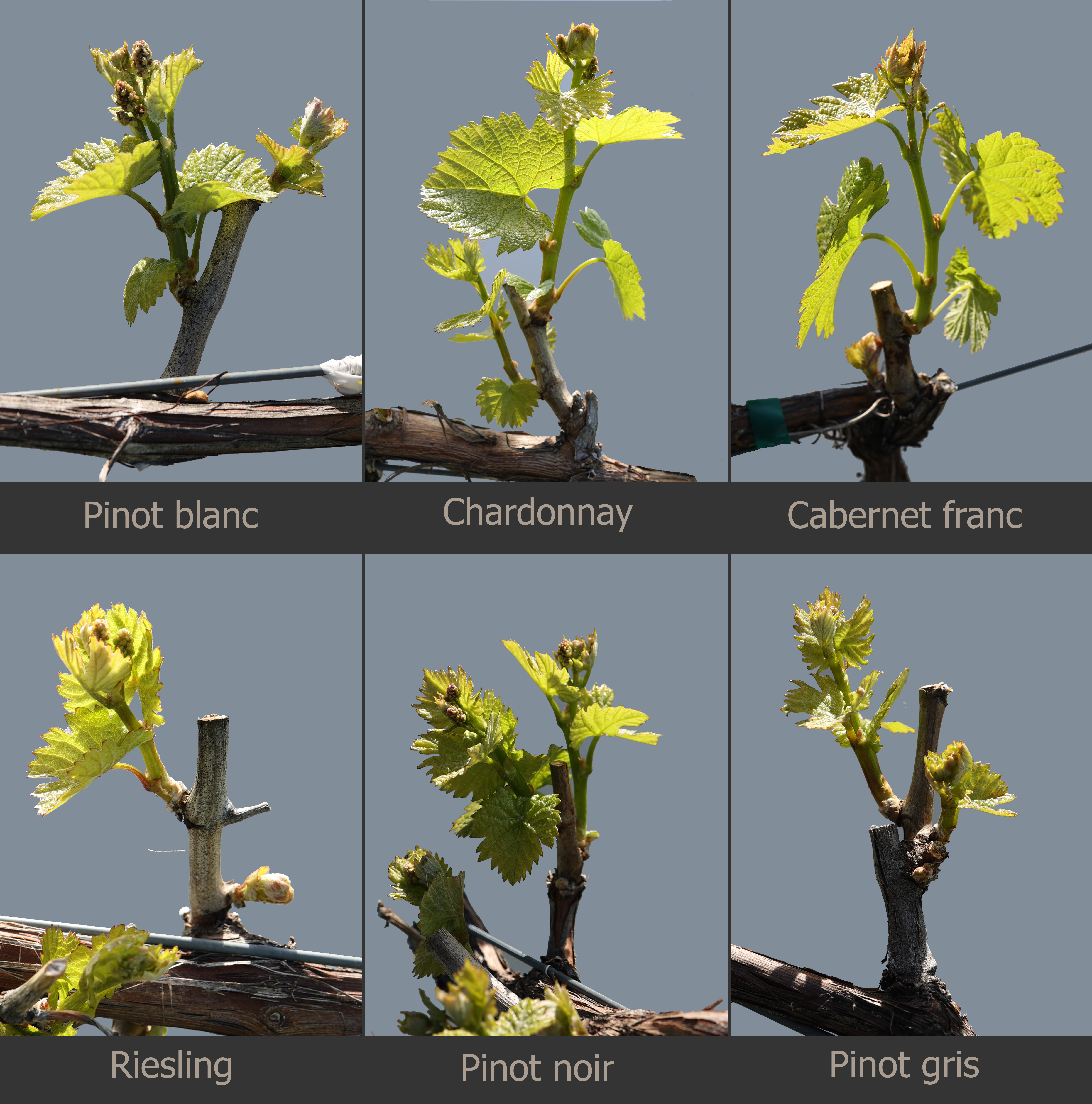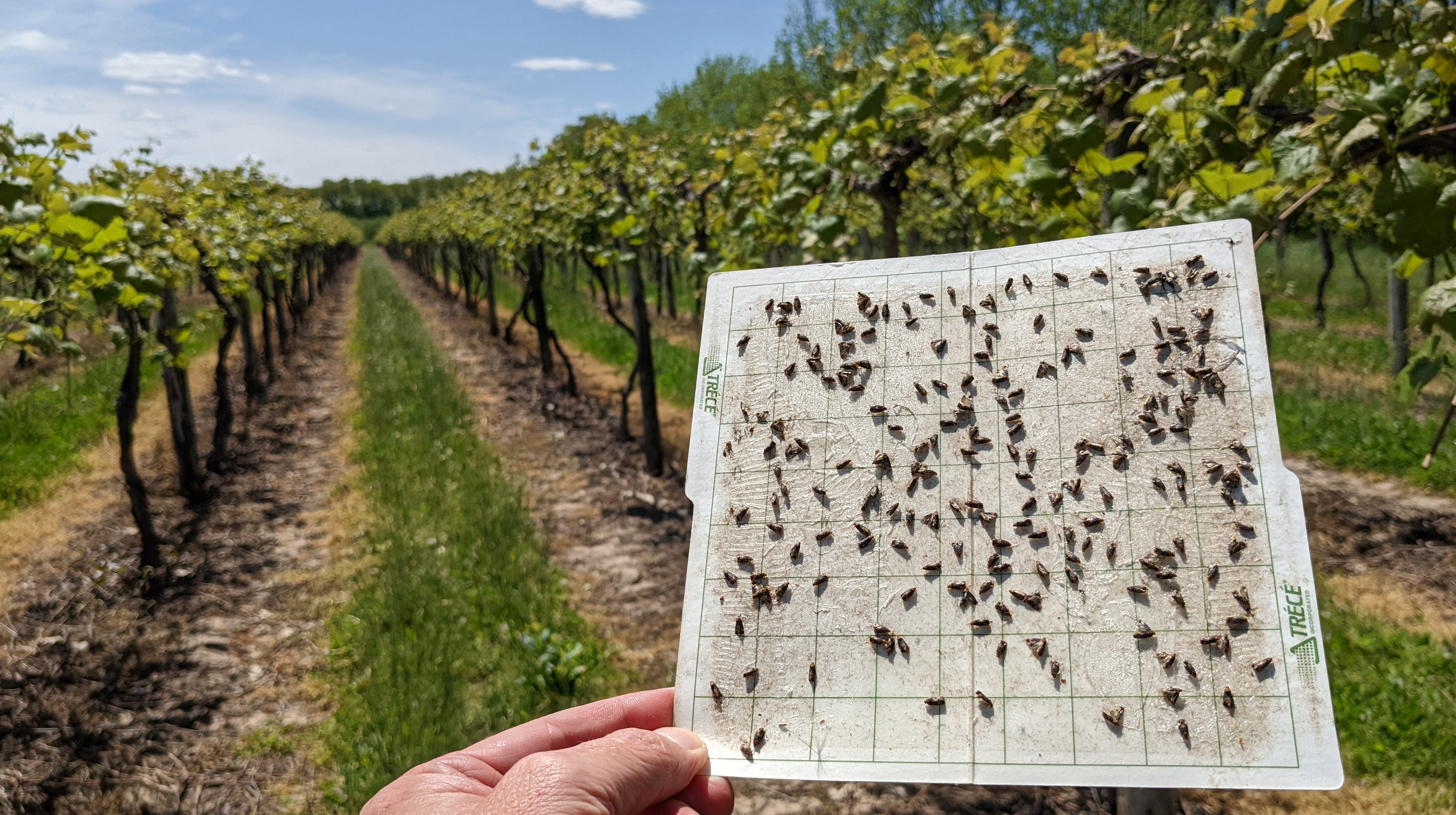Michigan grape scouting report – May 25, 2022
Wild grape bloom is expected soon in southern Michigan. Shoot growth is slow, but continuing in northern vineyards.

Weather
Last week was mild in southern Michigan, cold in northern reaches of the state. Southern Michigan saw high temperatures near 60 most of the week with the exception of a short-lived warm up at the weekend when much of Michigan’s southern tier reached the low 80s for Friday and Saturday. Northern portions of Michigan were about 10 degrees colder and only received one day of the brief warmup on Friday.
The warmup on Friday was due to a warm front that passed through the state. This front also brought thunderstorms and brief, but at times, heavy rain in some locations. Most locations received a half to an inch of rain from this system.
The next week will continue with high temperatures near 70 degrees in southern Michigan, rising to the mid to upper 80s by the end of the weekend and into the start of next week. Northern wine growing regions will once again be 5-10 degrees cooler. The only major rain predicted should occur today through parts of Friday. The rest of the coming week should be partly to mostly sunny.
With the cooler week, we picked up fewer GDD than last week: 27-76 GDD base 50. The southwest region is 144 GDD base 50 ahead of the northwest region.
Southwest Michigan GDD Summary from March 1 through May 23, 2022
Southeast Michigan GDD Summary from March 1 through May 23, 2022
Northwest Michigan GDD Summary from March 1 through May 23, 2022
|
Region |
Current GDD 50 F |
GDD 50 F last week |
Collected the past week |
|
Southwest Michigan |
369 |
304 |
65 |
|
Southeast Michigan |
325 |
249 |
76 |
|
Northwest Michigan (NWMHRS) |
242 |
198 |
27 |
|
Northwest Michigan (Old Mission) |
225 |
194 |
16 |
Vine growth
In the southwest, shoot growth has continued at a steady pace. Juice grape varieties and early hybrids are at around 12-15 inches of growth. Clusters are visible and starting to separate. Other hybrids and early vinifera have 8-12 inch shoots. Most vinifera are around 6-8 inches of growth at this time.

In northern Michigan, although last week was a chilly week, most varieties have had good growth, gaining 1-2 inches of additional growth in the last week, putting them at 4-6 inches total. Two-three fully expanded leaves and initial clusters are distinguishable in some early varieties, such as Cabernet France and Chardonnay.

See this chart for grape growth stages.
Horticulture
Shoot thinning should be underway in earlier varieties in the southern vineyards, with later varieties beginning soon. Northern vineyards should begin thinning soon as well. Shoot thinning is an important canopy management tool to improve air circulation, minimize disease pressure, reduce shading, improve spray penetration and ultimately improve fruit quality at harvest. Thin shoots when they are 5-12 inches long.
See this article on Early Season Vineyard Management for more information on shoot thinning.
Diseases
At this time of year, the disease focus is on phomopsis, black rot, anthracnose and powdery mildew. Contact fungicides like the EBDCs (FRAC M3) and captan are the prebloom products of choice. They function similar to dormant applications by sanitizing the vineyard before bloom.
Copper, sulfur and early season oils may also be utilized (especially if a grower is organic), which try to suffocate fungal spores and infected tissues or kill on contact. Be careful when using oil with certain products as it can increase the risk of phytotoxicity. For more information on fungicide options and the impacts of rain on disease spread, check out last week’s grape scouting report or this article on early season disease management.
Insects
Grape berry moth catch remains high. These moths being caught are males. Males typically emerge before females in the spring. Without females, these males are highly attracted to traps so we get these high catches. Female moths will start emerging as the clusters start blooming in the coming weeks.

Wild grape bloom has been seen in one location so far in Berrien County. Wild grape bloom at 50% is used as the biofix for grape berry moth models. Biofix for this insect has been around the last week of May or the first week of June for many parts of southwest Michigan in recent years.
For southern Michigan grape growers, be on the lookout for rose chafer and potato leafhopper. Both should be expected in vineyards soon. Rose chafers can be found feeding on leaves and clusters. Potato leafhoppers feed on the undersides of leaves. The leaves of some sensitive grape varieties can be yellowed and cupped in response to this leafhopper’s feeding. Most vines are very tolerant of their damage and control isn’t warranted. Potato leafhopper does not overwinter in Michigan. It is blown in on southerly winds and storm fronts in the spring.
Related articles:
This work is supported by the Crop Protection and Pest Management Program [grant no 2021-70006-35450] from the USDA National Institute of Food and Agriculture.



 Print
Print Email
Email